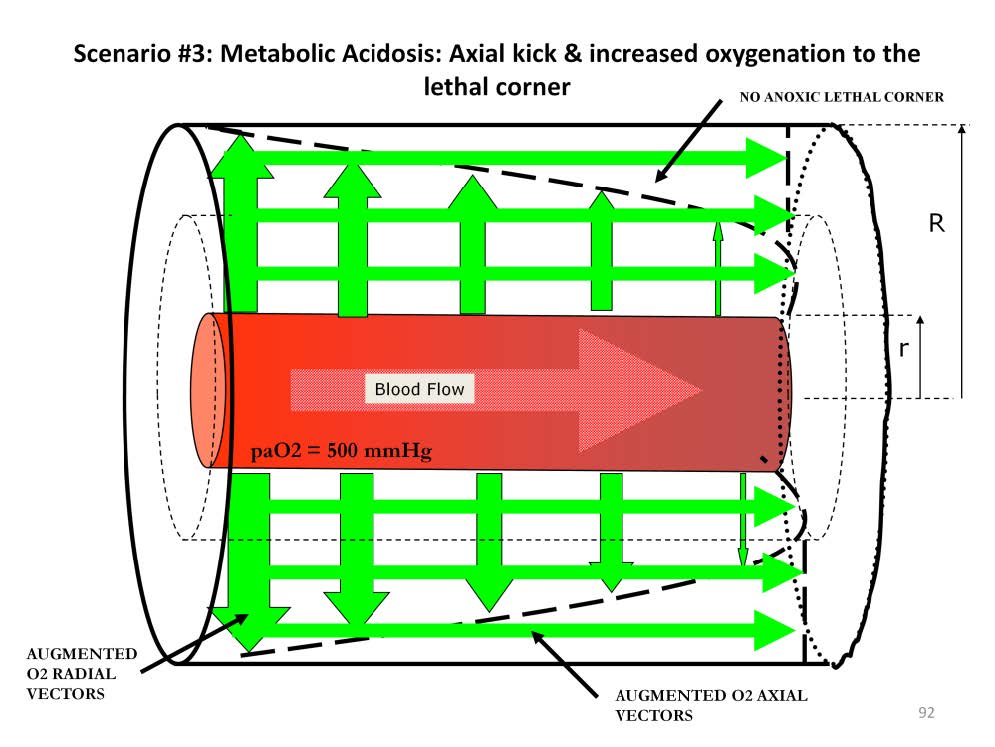
During periods of low blood flow it is possible to capitalize on the increased axial vectors by greatly increasing the paO2. In this example, increasing the paO2 from 150 to 500 mmHg floods the arterial end tissues with oxygen. This greatly increases the axial vectors and pushes more oxygen towards the lethal corner. Traditionally it has been taught that increasing the paO2 above the point of full hemoglobin oxygen saturation (about 150 mmHg) is unnecessary because the higher paO2 values only represent miniscule amounts of dissolved oxygen. But by increasing the axial gradient, oxygen can be more effectively redistributed along axial vectors to lethal corner areas during periods of hemodilution, low blood flow or reduced perfused capillary density.
However even if the patient can be stabilized using axial kick to oxygenate the anoxic lethal corner, this will only work for a short periods of time typical of normal CPB applications. In long term support applications, the patient will eventually expire as a result of the build up of carbon dioxide in the lethal corner.

Perfusion Theory is an educational platform for the Oxygen Pressure Field Theory (OPFT). August Krogh’s theoretical concept of the oxygen pressure field is explained and then applied to clinical applications in perfusion practice.